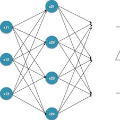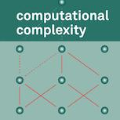Tail-biting convolutional codes extend the classical zero-termination convolutional codes: Both encoding schemes force the equality of start and end states, but under the tail-biting each state is a valid termination. This paper proposes a machine-learning approach to improve the state-of-the-art decoding of tail-biting codes, focusing on the widely employed short length regime as in the LTE standard. This standard also includes a CRC code. First, we parameterize the circular Viterbi algorithm, a baseline decoder that exploits the circular nature of the underlying trellis. An ensemble combines multiple such weighted decoders, each decoder specializes in decoding words from a specific region of the channel words' distribution. A region corresponds to a subset of termination states; the ensemble covers the entire states space. A non-learnable gating satisfies two goals: it filters easily decoded words and mitigates the overhead of executing multiple weighted decoders. The CRC criterion is employed to choose only a subset of experts for decoding purpose. Our method achieves FER improvement of up to 0.75dB over the CVA in the waterfall region for multiple code lengths, adding negligible computational complexity compared to the circular Viterbi algorithm in high SNRs.
翻译:使用尾尾部的编码 。 本文提出一种机器学习方法, 以改善尾部比重代码的最新解码方法, 重点是像LTE 标准那样广泛使用的短长度制度 。 这个标准还包括一个 CRC 代码 。 首先, 我们将循环维特比算法参数化, 一种利用基础电流循环性质的基线解码器 。 一种组合组合将多重的加权解码器组合在一起, 每个解码器专门解码词从频道语言分布的特定区域解码。 一个区域对应终止状态的子集; 共性覆盖整个州空间。 一个不可忽略的标签满足两个目标 : 它可以很容易地过滤解码单词, 并减轻执行多个加权解码器的间接负担 。 使用 CRC 标准只选择一组专家来解码目的 。 我们的方法在频道词汇分布的某个特定区域中, 将解码解码专门解码解码化。 相对于高数值的 CVA 变法, 将高数值提高到了 0. 7 。



